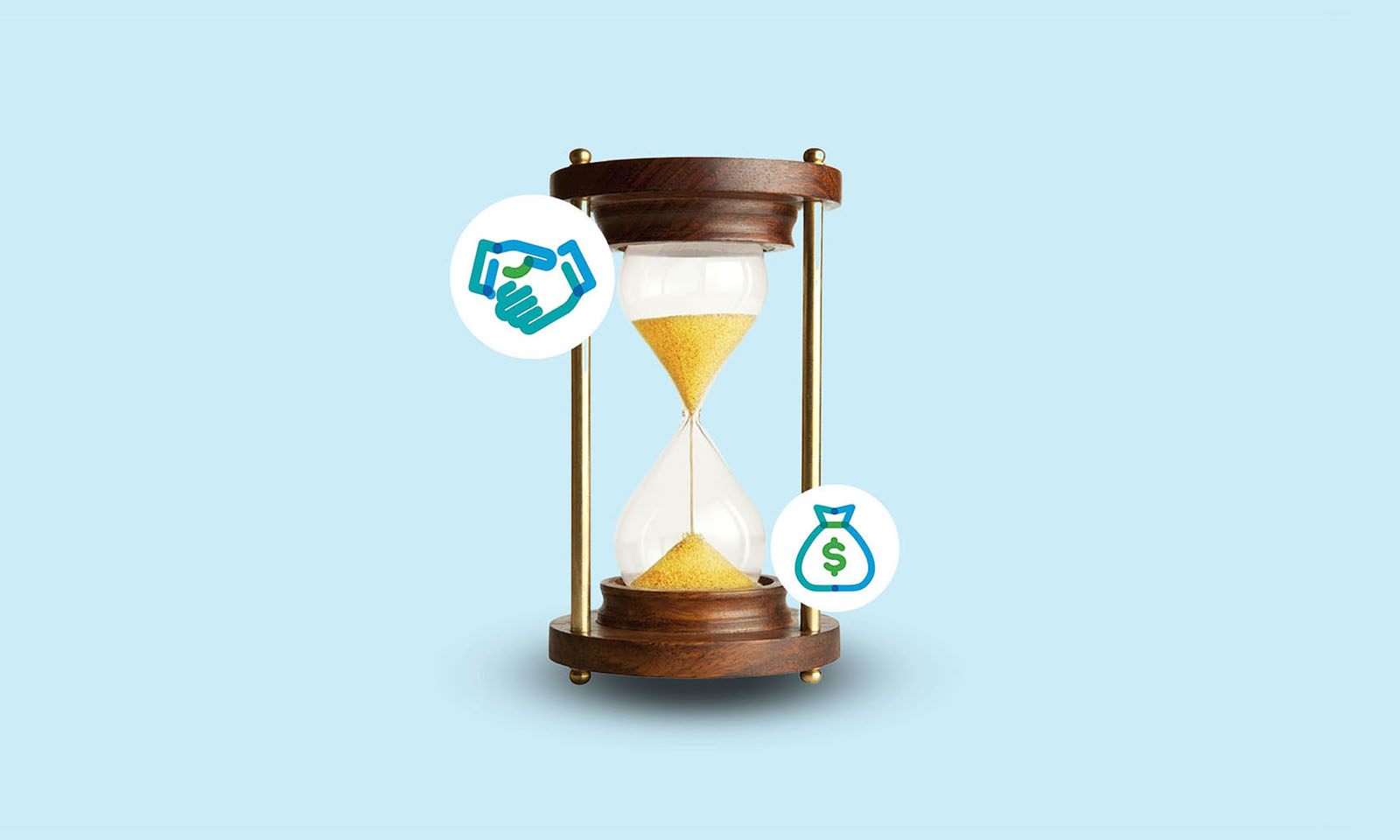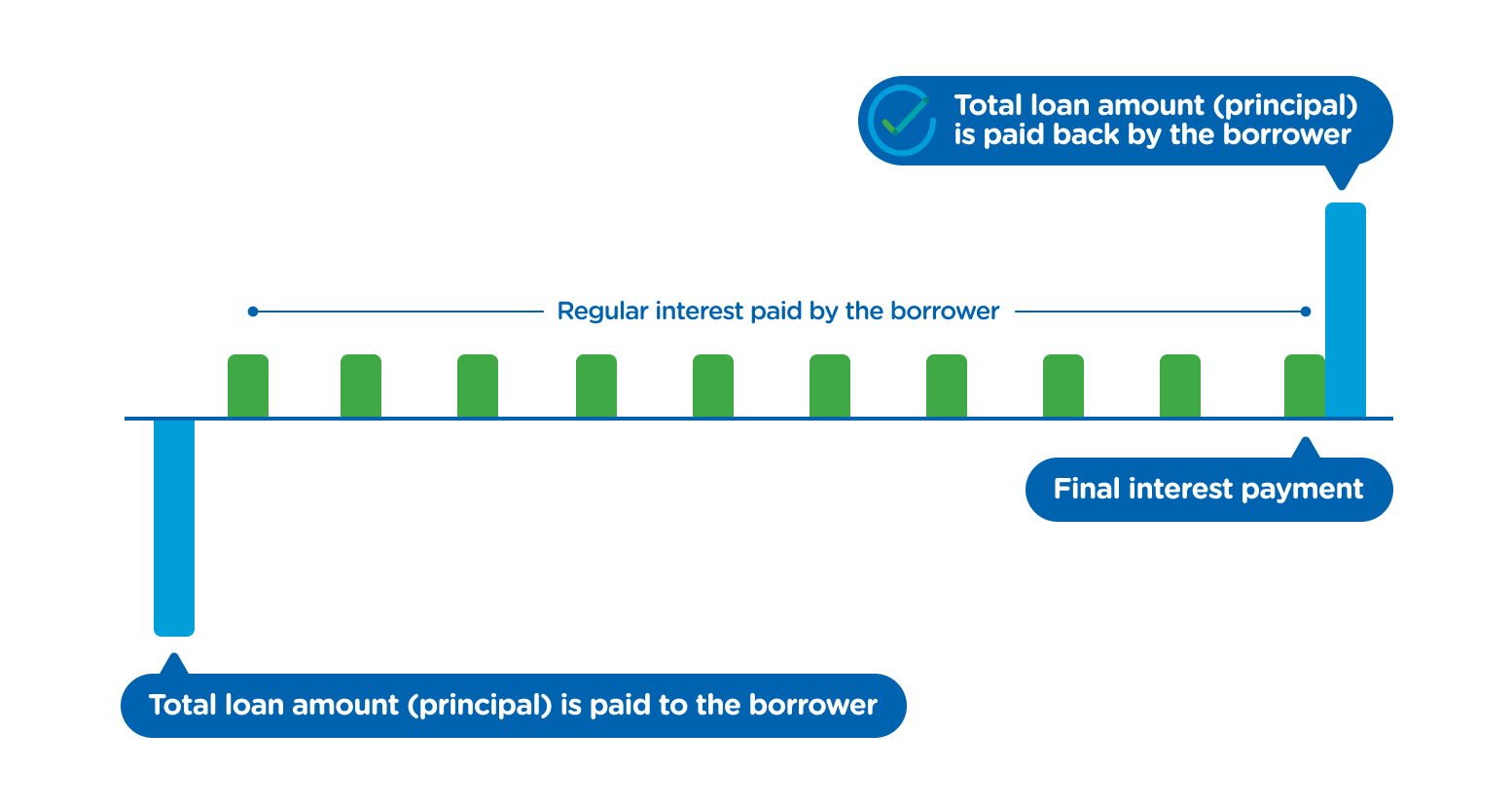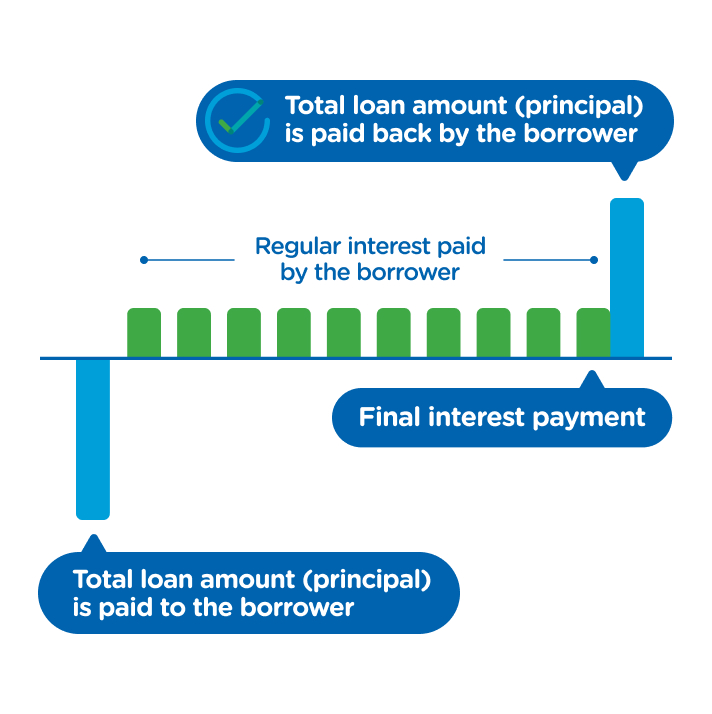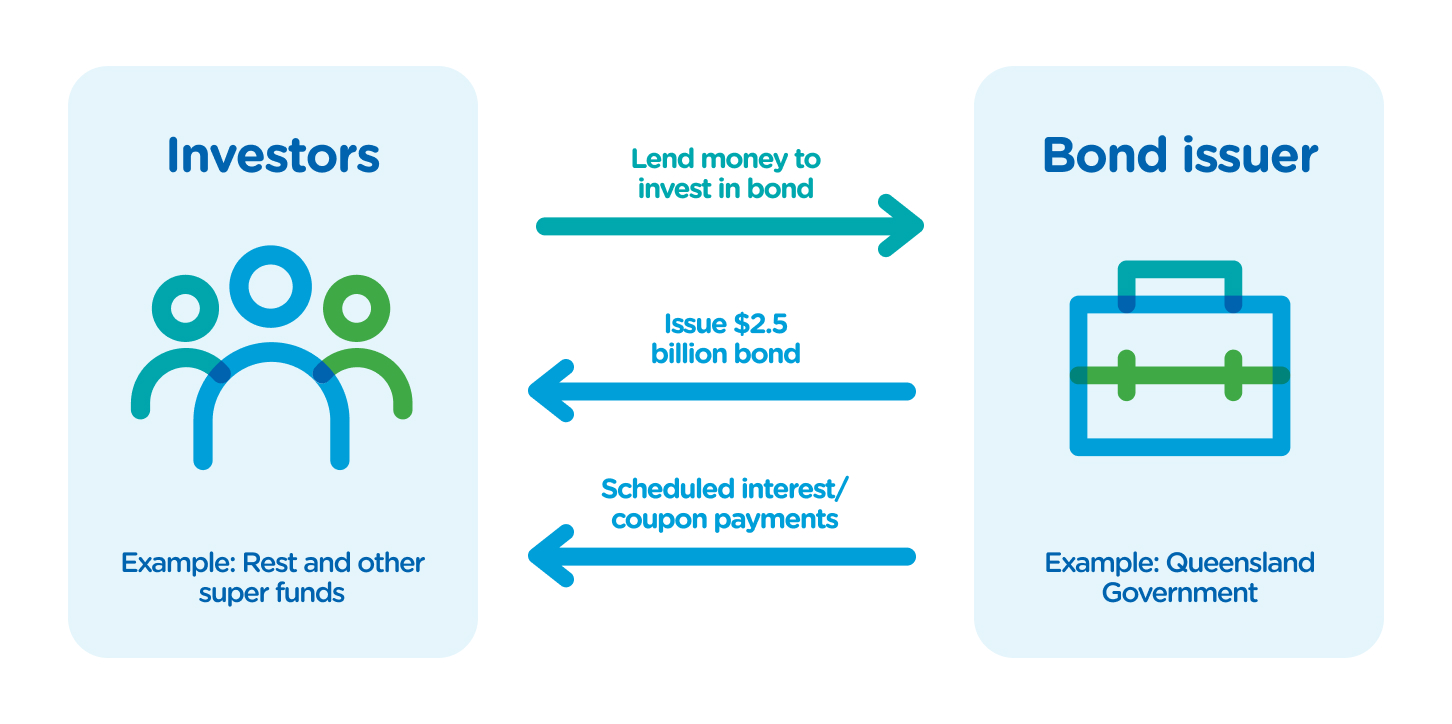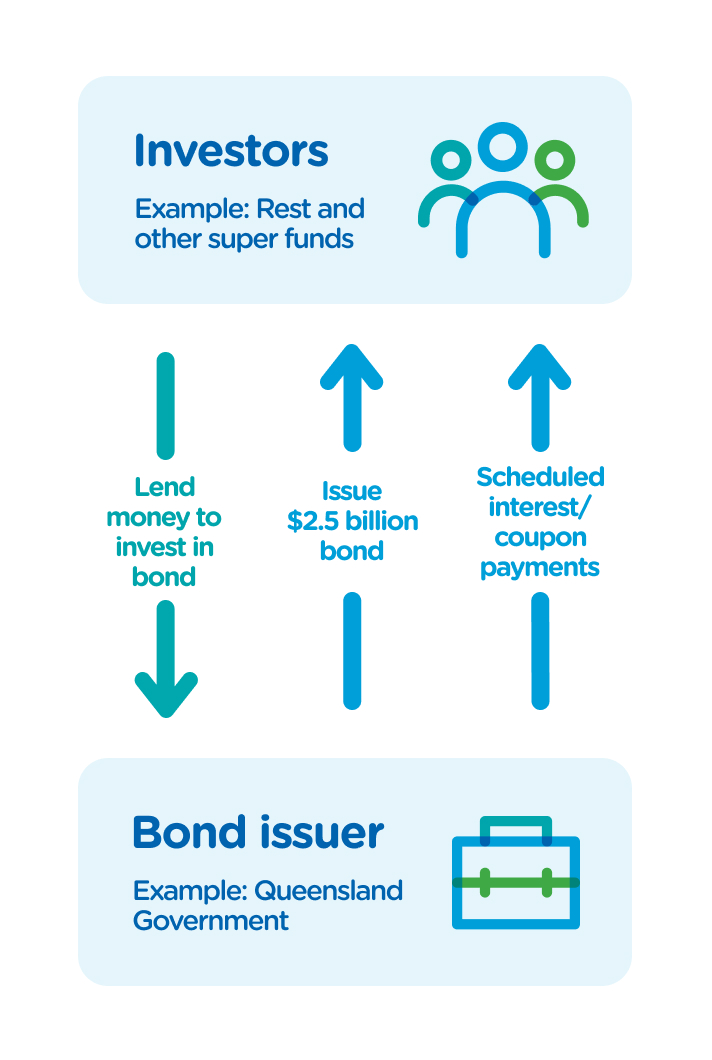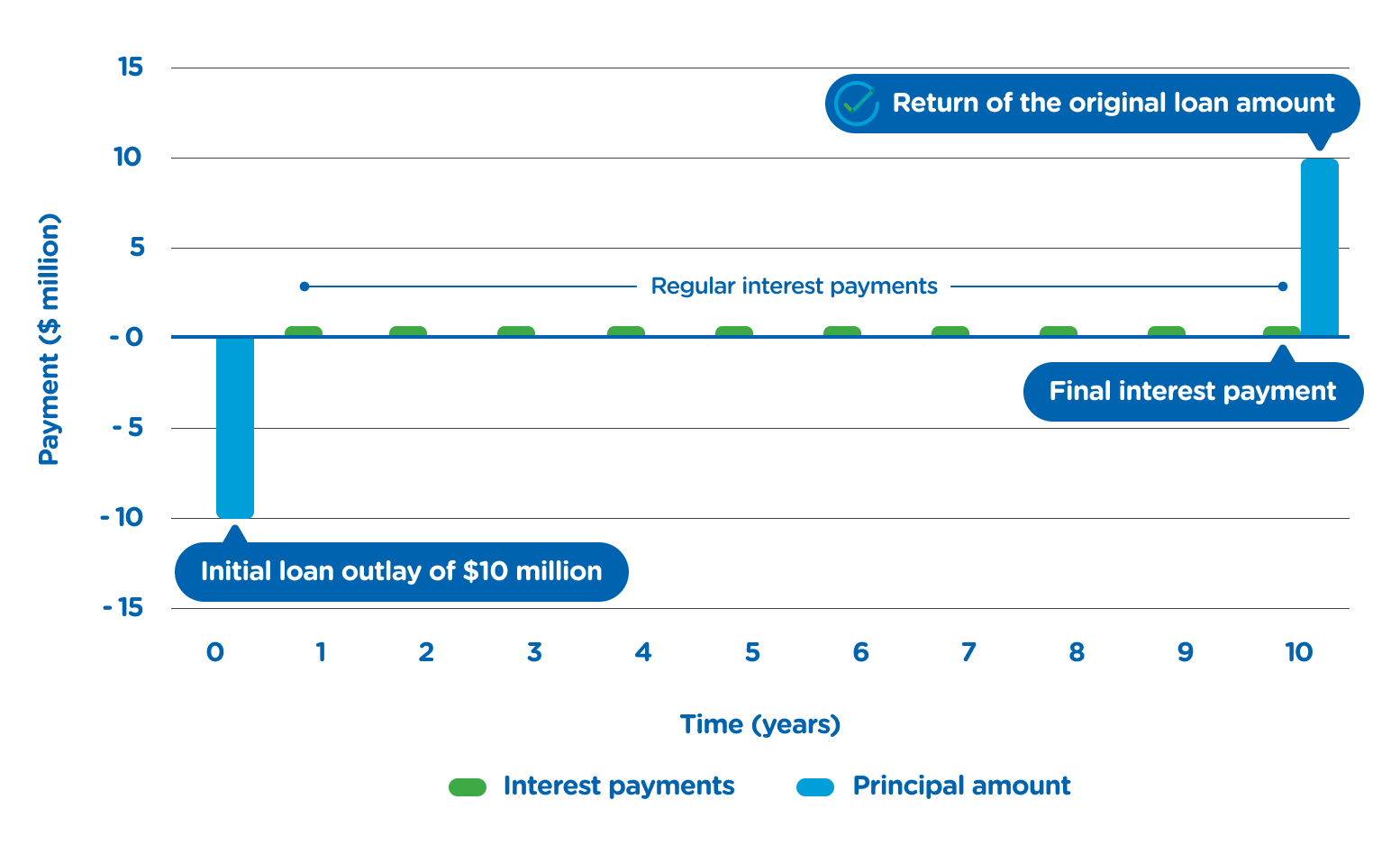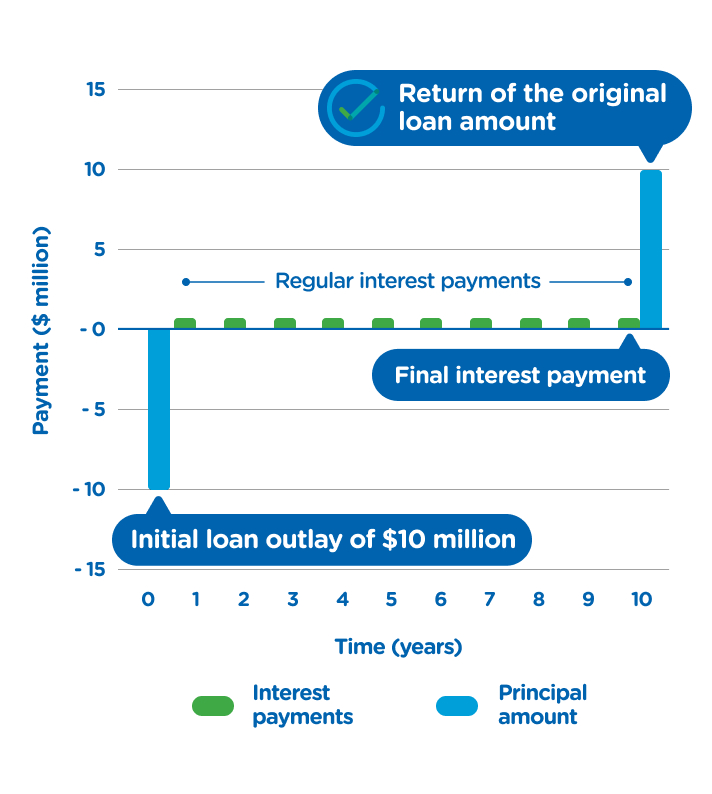So how exactly is a bond like a loan then?
Bonds are one of the most common types of debt investments. That’s why you’ll often hear people flip between terms like fixed income, bonds and debt investments.
A bond is a type of loan that a company or government will ‘sell’ or issue when they need to raise funding.
As an example, the Queensland Government may issue a $2.5 billion, 10-year bond to raise money for an infrastructure project like a new highway (please note this example is for illustrative purposes only). In this example:
- The bond is paying an interest rate (also called a coupon rate) to investors of 4.50% which is paid annually.
- Rest invests $10 million in that bond, and so are providing the Queensland Government with a loan for 10 years.
- There will be other investors also investing into that same bond with Rest, as the Queensland Government is looking to raise $2.5 billion.
- In exchange for that loan, the Queensland Government will make regular annual interest / coupon payments to Rest at a rate of 4.50% per annum.
- After 10 years, the Queensland Government will repay the principal to investors (i.e. Rest receives back its initial $10 million investment).
Payment schedule for Rest’s investment in a Queensland Government bond

